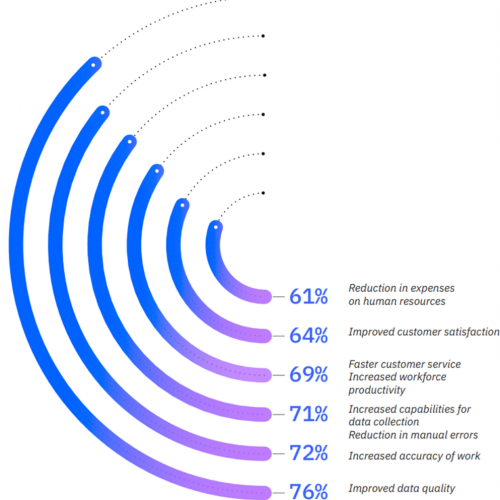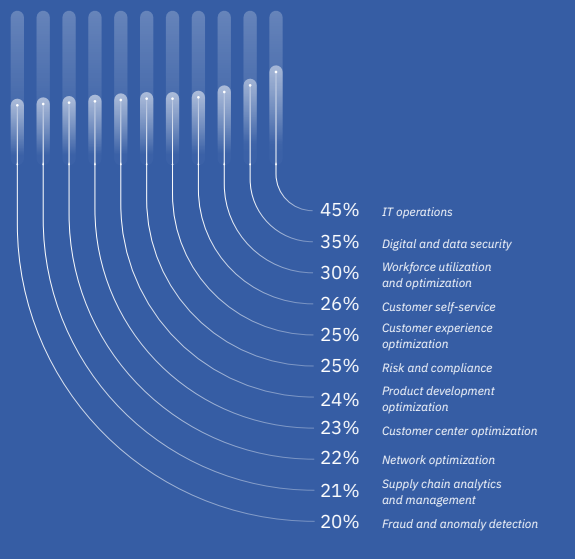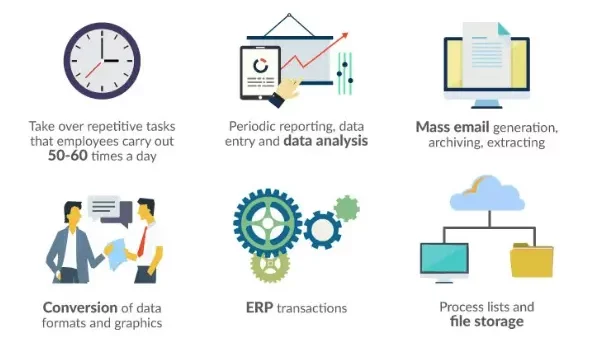What is RPA?
Robotic Process Automation (RPA) is a technology that enlists the help of bots, programs that can perform repetitive tasks directly from a user interface. Fast to deploy and easy to update, bots can learn, mimic, and then execute rules-based business processes by observing human digital actions; it can be applied to high-volume, business rules-driven, repetitive processes across your organization.
Bots fill a special niche within a business process automation platform — where traditional automation methods would leave gaps in processes, bots can fill them in by working directly with the front ends of applications to simulate how a human would interact with the software.
In a process where you previously had to manually review a document, enter data or transfer information between systems, the robot fills in these gaps in what could be a more automated process. In addition, the bot by its nature will be more accurate and efficient than a human user.
Why does RPA matter?
Currently, level of automation is still limited compared to the level of automation that can be achieved with existing technologies.
- Employees spend 10%-25% of their time on repetitive computer tasks.
- IT departments spend 30% of their time on basic low level tasks
- 50% of companies spend between $5- $25 dollars for manual invoice processing
- A typical rules-based process can be 70%-80% automated
Key Benefits
In addition to significant cost savings and higher employee morale, applying RPA improves business agility to drive higher customer satisfaction by improving response time and accuracy and helps reduce errors to support compliance efforts and frees up workforce to do more strategic, higher value work. Furthermore, RPA solutions can require less coding and won’t disrupt existing infrastructure and systems because software bots work at applications’ presentation layer.

Where are RPA solutions deployed?

What processes are relevant to RPA?
Robotic process automation is a versatile, scalable technology that can be applied throughout the enterprise in a variety of industries. Top candidates for optimization with RPA are typically:
- Consistent and routine
- High volume
- Prone to human error
- Limited in requiring a person to make a decision
- Manual data entry

Bridging integration gaps with RPA
One of the immediate benefits of robotic process automation is its ability to integrate systems where gaps previously existed. Enterprises that rely on legacy systems or third-party, external sites for everyday operations but currently do not have the resources or the means to integrate them using other methods can deploy bots to do so. Fast to deploy and easy to update, syncing data and processes without human intervention. Bots enable organizations to quickly deploy integrations that sync data and processes without human intervention, filling in gaps between systems for more complete, end-to-end automation solutions.

RPA as part of the Digital Transformation Journey
RPA can be an important tool in solving automation challenges and pushing organizations to grow into digital workplaces. However, it is just one part of an organization Digital Transformation toolkit
Going beyond automating everyday repetitive tasks, RPA combined with traditional content services and business process management technologies can help organizations further maximize their potential as they make the most of their of automation strategies.
Want to Learn More?
If you want to take a closer look at the features, benefits and use cases of RPA, please contact us to set up a meeting with our automation experts.

